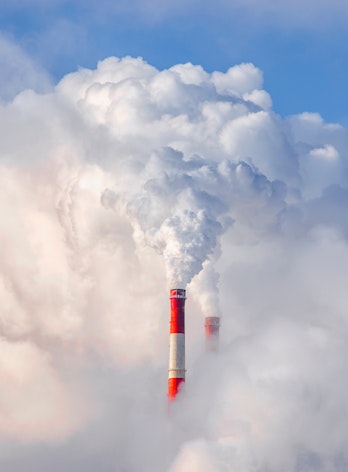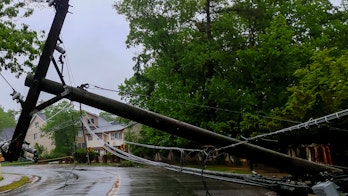
Climate Change
Energy and climate are inextricably linked
The global energy system is the bedrock of modern economies and societies, yet the production and consumption of energy are also responsible for 75% of greenhouse gas emissions, making it the primary driver of climate change.
As temperatures around the world continue to break records, the case for swiftly transforming the global energy system has never been stronger. The IEA’s Net Zero Roadmap lays out a pathway for the world’s energy sector to reach net zero emissions by mid-century, limiting global warming to 1.5 °C, as called for by the Paris Agreement, to avoid the worst effects of climate change.
The rapid growth of some clean energy technologies in recent years – including electric cars, solar PV and batteries – has kept the door to 1.5 °C open. Yet meeting this target would require much faster progress on a much larger scale, IEA analysis shows – with greater international cooperation and ambition from policy makers, as well as the swift and full implementation of the energy commitments made at the COP28 climate summit in Dubai. These include the global 2030 pledges to triple renewable power capacity, double energy efficiency progress, substantially reduce methane emissions, and accelerate the transition away from fossil fuels.
Energy and climate
Risks to global energy security are getting worse as climate change intensifies. Higher temperatures, as well as more frequent and severe extreme weather events, increasingly threaten the reliable supply of fuels, minerals and electricity, which can result in higher energy prices. Drought conditions, for example, can impede the operation of thermo-electric and nuclear power plants, which require water for cooling. Meanwhile, hurricanes, floods and other disasters can damage a wide range of energy infrastructure, leading to brownouts or blackouts.
Global warming is also driving up energy usage around the world by increasing demand for space cooling during warmer months. Unless the transition to a more secure and sustainable energy system accelerates, this will result in still higher emissions – exacerbating climate change and creating a vicious cycle.
Given the strong connections between ensuring energy security and tackling climate change, ministers from IEA member countries have instructed our Agency “to continue to put climate change and sustainable development along with energy security at the centre of its activities and analysis” – building on years of work on data collection, analysis and policy advice in this space.
We call upon the IEA to continue to put climate change and sustainable development along with energy security at the centre of its activities and analysis.
Support for COP
The IEA made significant contributions to the major outcomes reached at COP28 in Dubai, where nearly 200 countries recognised that to achieve the 1.5 °C target, energy-related greenhouse gas emissions need to reach net zero by 2050 – and set key goals in the first Global Stocktake of the Paris Agreement to help meet this objective. Now, at the request of governments, the IEA is taking a leading role in ensuring the full and timely implementation of these pledges.
The IEA, as part of an expanded partnership with the UN Framework Convention on Climate Change (UNFCCC) Secretariat, is now tracking progress towards these goals and regularly convening decision makers to discuss ways to accelerate implementation, including through our latest series of High-Level Energy Transition Dialogues ahead of COP29 in Baku, Azerbaijan. We are also providing support for countries as they develop their next Nationally Determined Contributions (NDCs) under the Paris Agreement, which present an important opportunity to raise ambition and ramp up implementation.
Details on existing NDCs, as well as net zero targets for each country, can be found in our Climate Pledges Explorer, which is updated periodically.
The IEA also supports COP negotiations, and our Executive Director will lead an IEA delegation to COP29 in November 2024.
Explore our dedicated web resource tracking global progress towards the energy goals committed to at the COP28 climate summit.
Key findings
Growth in clean energy technologies is keeping the door open to 1.5 °C
Net Zero Roadmap: A Global Pathway to Keep the 1.5 °C Goal in Reach
Emission changes over time by mitigation measure in the Net Zero Scenario, 2022-2050
OpenEnergy demand is set to soar as more people face extreme heat
Average cooling degree days in G20 economies, 1979-2022
OpenTracking climate hazards
Energy systems are highly affected by the impacts of climate change. Extreme temperatures, droughts, floods, wind threats and wildfires affect energy production and infrastructure; rising temperatures drive cooling needs which can cause spikes in energy consumption; and wildfires and intense weather events can disrupt power grid operations.
Two tools developed by the IEA and its partners can be used to keep tabs on risks such as these. The IEA and the OECD created the Climate Hazard Exposure Tracker to analyse the impacts of various climate hazards on people and infrastructure, including in the energy sector. It includes decades of data at the country and sub-national level. Meanwhile, weather-related data that can be used for energy sector modelling and analysis can be found in the Weather for Energy Tracker from the IEA and CMCC.
Key collaborations
The IEA and the UNFCCC are collaborating on tracking and reporting on the energy-related outcomes of the first Global Stocktake at COP28.
The IEA and the UNFCCC are collaborating on tracking and reporting on the energy-related outcomes of the first Global Stocktake at COP28.
The IEA and the UNFCCC are building consensus on actions to deliver 1.5 °C-aligned energy transitions; and supporting the next round of Nationally Determined Contributions under the Paris Agreement – while deepening existing cooperation on data and capacity building.
The Climate Change Expert Group (CCXG) works to enhance understanding of specific topics relevant to the UN climate change negotiations and for implementing the Paris Agreement.
The Climate Change Expert Group (CCXG) works to enhance understanding of specific topics relevant to the UN climate change negotiations and for implementing the Paris Agreement.
Established in 1993, CCXG activities are jointly supported by the Organisation for Economic Co-operation and Development (OECD) and the IEA.


